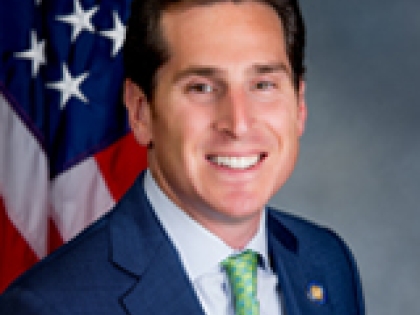
Shoring up Long Island's beaches
The crest of the Atlantic Ocean pounds Montauk’s coastline, exposing buried sandbags intended to protect the downtown from rising sea levels. Due west, a narrow portion of Gilgo Beach washes away over the harsh winter, bringing the water dangerously close to Ocean Parkway. And years of erosion threaten to wipe Southold Town Beach completely off the map.
Across Long Island, coastal communities are in a battle against nature, trying to duck another superstorm like Sandy and cope with the inevitability of climate change at the same time.
Now, with the heart of hurricane season ready to beat down again, experts are divided over whether enough is being done to protect the region.
“From a global perspective we are absolutely better prepared than before Sandy,” said Aram Terchunian, a coastal geologist with First Coastal, an environmental consulting firm in Westhampton Beach.
Terchunian points to new coastal barriers, thousands of elevated or demolished shore-lying homes and millions of cubic yards of sand that have renourished local beaches in the seven years since Sandy damaged nearly 100,000 homes and businesses on Long Island.
But environmental activist Kevin McAllister isn't convinced. He argues that shoreline-hardening projects are stopgap fixes that don't deal with the eventuality of rising sea levels.
What federal officials need to consider, McAllister said, is the politically unpopular policy of “strategic retreat” — purchasing vulnerable waterfront properties and returning the land to nature.
“There is going to be a point of no return when we are only going to get the beach back by pumping it,” said McAllister, a former Peconic baykeeper. “In time, the flooding will only get worse.”
Here’s a closer look at what Long Island is doing to stem the tide:
Long Beach
Sandy brutalized Long Beach.
The tidal surge flooded the city, destroying the more than two-mile-long boardwalk on the south side. Waves from the bay to the north roared into homes along Reynolds Channel.
When all was said and done, damage to the city’s infrastructure, including its water and sewer treatment plants, totaled $150 million.
Seven years later, the Army Corps is nearly finished with a $130 million shoreline protection project from Point Lookout to Long Beach.
And the city has secured more than $32 million in state and federal funds for bulkhead improvements on the bay side, said Rob Agostisi, the acting city manager.
“Long Beach’s recovery since superstorm Sandy has been remarkable," Agostisi said. "Since the storm, we have completed hundreds of public works projects, including the boardwalk, key infrastructure and all city parks."
Crews have spent the past three years transforming the barrier island. Dunes were added in front of the boardwalk. The beach was widened with 300 feet of sand. The Army Corps constructed or rehabilitated 18 rocky jetties jutting into the ocean, designed to trap sand on the beach and prevent erosion.
The beach opened this summer to new walkovers over the dunes, built with 1.2 million tons of sand. Contractors planted the first seedlings of dune grass and will return in the fall to finish work near the dunes and plant more types of grass.
But city officials worry that boulders on the new jetties could deteriorate and fall into the ocean. Already, the 15,000- to 30,000-pound stones have started to separate because they weren't built on a concrete foundation, city officials said.
Concern is great enough that Long Beach has delayed taking responsibility for the jetties for five years while the Army Corps conducts annual inspections, maintenance and repairs.
The Army Corps also is looking at storm protection and flooding on the South Shore, in the bays around Reynolds Channel. One option under consideration: tidal gates from Jones Inlet to East Rockaway that would prevent storm surges from flooding communities along the shoreline, including Freeport, Island Park and Seaford. Tidal gates can run into the billions.
“The back bays study is going to be the blueprint study for how we deal with flooding on the South Shore,” said State Sen. Todd Kaminsky (D-Long Beach). “We can raise roads and put in better drainage systems. These projects are important in hot spots, but to deal with the problem comprehensively as sea levels rise and storms get worse, having a back bays study planned is the answer.”